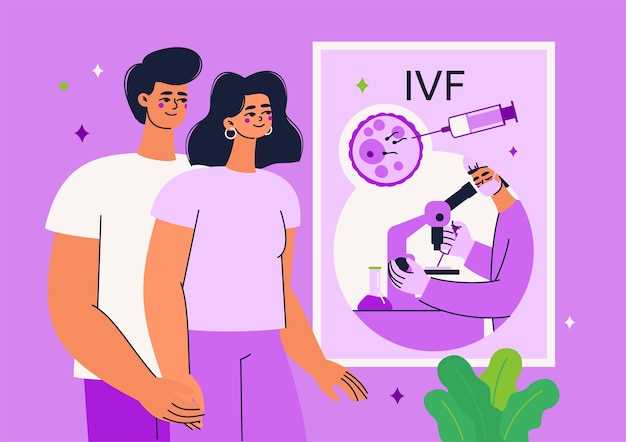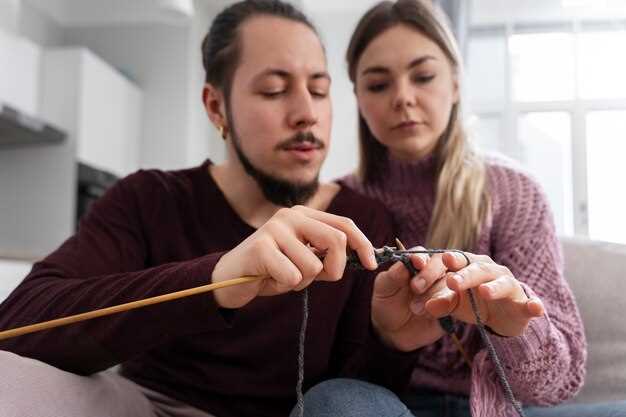Begin by scheduling a medical check and a session with a licensed therapist alongside a frank conversation with your partner. Clinical screening for depression, substance use and other illnesses uncovers reversible drivers; reviewing prescription medications that alter dopamine or oxytocin signaling is a concrete first step. Absorb the baseline: objective tests, timeline of events, and a written plan you both accept.
Quantitative studies using twins and family designs attribute roughly 30–50% of variance in extra-pair behavior to heritable factors, with the remainder linked to environmental exposures. Candidate markers include variation in DRD4 and OXTR alleles and differences in receptor expression; older adults sometimes show reduced oxytocin receptor sensitivity, which can change attachment patterns. Higher novelty-seeking scores and certain life stresses correlate with greater risk in multiple cohorts, which means genetics interact with environment rather than determining fate.
Practical steps for couples: map stressors (work, illnesses, sleep loss), commit to weekly shared activities that rebuild bonds, and set limits on alcohol or stimulants that raise impulsivity. If you wish to repair trust, a protocol of 12–20 structured therapy sessions focused on communication and behavioral contracts reduces relapse markers in trials and clinical audits. Use a therapist who tracks measurable goals and includes the partner in at least half the sessions.
Two brief examples: sandra, 54, became less connected after a chronic illness and improved attachment after adjusting medications and attending dyadic therapy; lauren, Thirty-two, showed higher risk scores tied to childhood instability and reduced that risk by treating anxiety and rebuilding predictable routines with them. If you take these steps, youll have clearer data, healthier relationships, and a practical pathway to remain or become more faithful rather than relying on inherited tendencies alone.
Genetic evidence and limits
Prioritize clinical assessment over direct genetic testing: perform family-history intake, standardized mental-health screens, addiction evaluation and immediate referral to a trained therapist to resolve relationship rupture and safety concerns.
Twin and family studies estimate heritability of sociosexuality and extra-partner affairs generally in the ~20–60% range depending on measure and sex; this range comes from multiple twin designs and longitudinal study samples. Candidate-gene reports (DRD4, AVPR1A, OXTR and dopamine-pathway variants) show inconsistent replication and very small effects. Large-scale genome-wide association efforts have not produced robust single-locus predictors; current polygenic scores explain only a small fraction of variance (typically under 5%).
Environments across the lifespan substantially impact outcomes: childhood adversity, peer norms, substance availability and economic stress interact with genetic predisposition. Individuals predisposed by genotype still show different trajectories while exposed to different contexts. Mental-health diagnoses and addictions are more predictive of relationship rupture than any single variant and are modifiable targets for intervention.
Do not blame cheaters solely on biology: clinical practice should treat addictions, address mood and impulse-control disorders, and offer couple-focused work that moves beyond genetic labels. One researcher, Justin Montane, believes integrative models that include genetics, psychosocial stressors and partner dynamics produce better predictions and help resolve recurrence; other experts recommend the same pragmatic mix of therapy, medication when indicated and behavior-focused relapse prevention.
| Evidence type | Typical effect / variance | Clinical implication |
|---|---|---|
| Twin / family study | ~20–60% heritability | Useful for risk framing; not determinative for individual cases |
| Candidate-gene reports | Small, inconsistent | Do not base treatment decisions on single variants |
| GWAS / polygenic scores | <5% variance explained | Not currently clinically actionable for predicting affairs |
| Environmental / clinical factors | Large, context-dependent impacts | Primary targets: treat addictions, address mental illness, strengthen relationship skills |
Actionable steps: screen for substance misuse and mood disorders, prioritize evidence-based therapies, set safety plans, use genetic information only as background context, and keep the focus on changing environments and behavior to achieve better outcomes for the same individuals who may be predisposed.
Which genes and genetic variants have been associated with infidelity and extra-pair mating
Answer: The variants most often reported are the DRD4 7-repeat allele (a dopamine-related 48‑bp VNTR), DRD2 Taq1A A1, AVPR1A RS3 length polymorphisms, and the SLC6A4 5‑HTTLPR short allele; these can make somebody somewhat predisposed to higher novelty-seeking, lower pair-bonding or impulsivity, but they do not definitively determine behaviour.
DRD4 (dopamine receptor D4) 7R: multiple papers link 7R to novelty-seeking and increased extra-pair mating in some samples, but effect sizes are small and most replication attempts show inconsistent results–several study cohorts found the association wasnt robust after controlling for socioeconomic and relationship factors. DRD2 (A1) has been tied to reduced D2 binding and risk-taking; AVPR1A RS3 and OXTR variants affect social bonding and partner preference in animal models and correlate with relationship measures in humans. 5‑HTTLPR short allele is implicated in impulsivity and stress reactivity, which can raise the likelihood of risk behaviours under adverse circumstances.
Interpretation: these variants change neurotransmitter signalling (dopamine, vasopressin, oxytocin, serotonin) and so shift unconscious drives and reward sensitivity, but they explain only a small fraction of variance – genetics plus environment set a predisposition, not a sentence. If somebody has a risk allele, their odds may shift up or down depending on upbringing, attachment, substance use, and mental health; a gene-by-environment interaction is the norm, not the exception.
Practical recommendations: do not use single-gene reports to label anybody definitively – genetic testing cannot answer moral or predictive questions alone. For couples or clinicians wanting to learn more, focus on measurable relationship variables (communication, conflict resolution, sexual satisfaction) and treat underlying mental or substance problems that helped drive behaviour in studies. If family history is relevant (for example, Brendan observed his mother normalising multiple partners, or similar childhood circumstances), address those learned patterns through therapy rather than assuming this is purely biological. Brief behavioural interventions and couples therapy produce better outcomes than genotyping when the problem is current relationship risk.
How twin and family studies estimate heritability of cheating behavior
Use twin and family estimates as probabilistic guides for assessment and intervention: most large twin analyses report heritability in the range of ~30–50% for extra-relational sexual behavior, while the remainder is accounted for by shared and unique environmental factors – treat that predisposition as risk, not verdict.
- Basic method: compare monozygotic (MZ) twin concordance to dizygotic (DZ) concordance; greater MZ similarity implies additive genetic influence. ACE models partition variance into A (additive genetics), C (shared environment) and E (unique environment/error).
- Magnitude: tens of twin cohorts collected over decades show A estimates commonly between 0.3 and 0.5, C often small, E substantial. These numbers come from population samples collected across countries and clinical versus community samples.
- Family and sibling designs: looking at siblings, parents and offspring controls for shared family exposures and allows detection of non-additive effects or cultural transmission from older generations.
- Adoption and extended pedigree studies: when available, adoption designs separate rearing environment from biological relatedness; large university registries and national registers have provided most of the robust evidence.
How to interpret results in practice:
- Do not equate predisposition with inevitability: a genetic signal wasnt deterministic – life events, social networks, relationship quality and stressors alter outcomes.
- Assess motivations and affective drivers: pleasure-seeking, boredom, anxiety, attachment insecurity and opportunity all interact with biological predisposition to increase risk of an affair in a given person or couple.
- Use multi-level data: combine self-report, partner report and objective markers (when available) and looked-at patterns across time; longitudinal designs over years give stronger causal inference than cross-sectional snapshots.
- Mechanisms: neurobiological work links reward circuitry and hormone systems to mating strategies – animal models (e.g., prairie vole studies) have modeled pair-bonding and extra-pair mating and show how single genes or neural pathways can draw individuals toward or away from long-term bonding.
- Environmental modifiers: socioeconomic stress, childhood modeling of relationships, substance use and social opportunity shape expression – something genetically drawn can be suppressed or amplified by boundaries, couple therapy or changing circumstances.
- Clinical recommendations: screen for anxiety, impulsivity and reward sensitivity; set clear behavioral boundaries with partners; tailor interventions to motivations rather than assigning blame; consider family history as one piece of evidence when planning treatment.
Research best practices:
- Replicate estimates across samples and populations before treating any result as true; meta-analytic synthesis across tens of studies increases confidence in effect sizes.
- Report model fit and sensitivity to assumptions (e.g., equal environments assumption for twins) and avoid simple statements that a trait is purely inherited or purely environmental – interaction is hard to untangle and wasnt ever simple.
- Translate findings carefully: emphasize predisposition and plasticity, and use animal and human lines of evidence together to map how brains, social context and motivations combine to produce real-world outcomes.
Why genome-wide association studies struggle to predict complex social behaviors
Standardize phenotypes and prioritize within-family and partner-pair datasets; require N>200,000 for discovery and always report the percent variance explained by polygenic scores so clinicians and researchers can set realistic expectations.
Use validated measures of actual behavior rather than single-item self-report: questions that distinguish affairs frequency, contextual details, and whether participants were married or single in specific situations cut measurement error that havent been controlled in most papers; there have been few replicable loci for relationship outcomes when surveys mix contexts.
Expect very small effects: polygenic scores for relationship‑related traits typically explain ~1–3 percent in independent samples, with higher estimates in discovery cohorts driven by overfitting, while true predictive power is limited because many loci have tiny odds ratios and individuals predisposed by common variants still experience large environmental variance and non-additive effects.
Animal models clarify mechanism but limit translation: vole and voles experiments illustrate oxytocin/vasopressin pathways that shape pair bonds in a controlled process, and vole work helped identify biochemical targets, yet human social choice, cultural norms and socioeconomic impacts produce far more variance and make direct mapping hard.
Operational recommendations: collect partner reports and longitudinal data, control for assortative mating and population stratification, integrate rare-variant sequencing and GxE models, and combine genetic scores with measures of childhood adversity, addictions and unhealthy relationship markers. Do not place blame on genotypes; use combined predictors to help design interventions that strengthen healthy bonds and reduce risky situations–youll still need to treat genetic predisposition as probabilistic, not deterministic, and focus on social and clinical levers that deliver more actionable impact (as noted by zietsch and whittler).
Can consumer DNA tests or ancestry reports indicate a higher risk of infidelity?
Answer: No – current consumer ancestry or direct-to-consumer (DTC) DNA reports do not validly predict an individual’s higher risk of an affair; rely on clinical genetic counseling or peer-reviewed research for meaningful genetic information.
Twin and family work puts heritability in the tens of percent for traits related to extra-pair behaviour, so there is a true genetic signal but it is probabilistic, not deterministic. Studies using twins show moderate heritability: that means genetics can explain some variance across people, but not half or all of it. Researchers such as zietsch have found replicating signals for broad sexual behaviour patterns, yet those findings are modeled at the population level and do not give a clear answer about somebody in particular.
Mechanistic work points to hormones and brain receptors (oxytocin/vasopressin systems) and animal models like the vole where receptor distribution is linked to pair-bonding. These basic-science results help frame hypotheses, but they dont translate into a reliable consumer metric. Polygenic scores for behavioural traits remain limited, calibrated on specific cohorts, and theyre sensitive to ancestry, environment and measurement differences – so chance and circumstances still dominate prediction.
Practical recommendations: do not use ancestry reports or raw DTC variants to judge a partner, child, or caretaker. If genetics are part of a research or clinical question, consult a university-affiliated geneticist or a certified genetic counselor rather than interpreting consumer summaries yourself. For relationship concerns, prioritize communication, boundaries and evidence-based therapy to repair trust; genetic predisposition is only one small piece of the same complex mind-and-context puzzle that shapes relationships and choice. In general, treat DTC behavioural claims as low-confidence, free information with limited clinical value where real risk assessment requires research-grade data, replication across cohorts, and careful interpretation under specific circumstances.
Authoritative source on limits and regulation of direct-to-consumer tests: U.S. Food and Drug Administration – Direct-to-Consumer Tests (https://www.fda.gov/medical-devices/in-vitro-diagnostics/direct-consumer-tests).
Biological mechanisms that shape temptation and restraint

Recommendation: Screen for family history, impulsivity traits and situational triggers, then combine targeted behavioral strategies, couples work with a counselor, and medical review when impulse control or libido is extreme.
Key biological contributors and quantitative findings:
- Heritability: twin studies estimate a heritable predisposition explaining roughly 30–50% of variance in tendency toward extra-pair sexual behavior; the remaining variance is environmental and circumstantial.
- Neurobiology: phasic dopamine release in the nucleus accumbens increases reward-driven approach and subjective pleasure; reduced dorsolateral prefrontal cortex (DLPFC) activation correlates with weaker inhibitory control and higher reported temptation in lab tasks.
- Hormones: higher baseline testosterone and acute rises with social competition are associated with increased sociosexuality and a greater likelihood to engage in risk-taking sexual decisions; oxytocin/vasopressin dynamics modulate bonding and reduce desire for alternative partners in some people.
- Developmental modeling: behaviors modeled by caregivers matter – observational studies show that children of parents who break commitments are 1.5–2× more likely to display similar patterns in adult relationships.
How genes and environment interact in practice:
- twins studies show identical twins are more concordant than fraternal twins, indicating genetic contribution, but discordant outcomes between twins brendan and scott in case-series highlight how different life circumstances change expression.
- Stress, alcohol, and novelty-seeking situations amplify reward signaling and lower restraint; when one sibling has high occupational stress and frequent alcohol use, that sibling more often goes on to engage in risk behaviors while the other remains comparatively restrained.
- Epigenetic and developmental factors (maternal caregiving, fathers’ modeling) shift sensitivity of reward and control circuits through childhood and adolescence, so early environment helps determine whether a predisposition becomes behavior.
Practical, data-driven steps for clinicians and couples:
- Assessment: use validated impulsivity and sociosexuality scales, obtain family history (mother, fathers, children patterns), and screen for substance use and stressors that raise reward responsivity.
- Behavioral interventions: train executive control (working memory, inhibitory control drills) and introduce environmental controls (reduce exposure to online cues, limit situations with alcohol) to lower immediate cue-reactivity.
- Counseling focus: target attachment repair and communication in relationships; a counselor should map triggers and coping plans so partners have concrete steps when temptation goes up.
- Medical options: review medications that blunt sexual drive or treat compulsivity where appropriate; consult psychiatry for cases with severe impulse dyscontrol rather than making unilateral decisions.
- Prevention for families: model stable commitment and consistent boundaries to children; weve seen programs that coach parents on modeling reduce intergenerational transmission of risk.
Guidance for individuals:
- If you notice rising craving or a persistent feeling that rewards are outweighing consequences, reduce exposure to high-risk situations and seek a counselor experienced in sexual behavior and impulse control.
- Adopt specific routines that build restraint: scheduled check-ins with your partner, remove anonymity-enabled apps, and create brief pause protocols to interrupt impulsive action through implementation intentions.
- Acknowledge circumstances matter – some people have a biological predisposition but remain free to choose restraint when environmental supports are strong; assessing both biology and context yields the best prognosis.
How dopamine and reward circuits drive novelty-seeking that can lead to affairs

Schedule one novel, shared activity per week (30–90 minutes) to redirect dopamine-driven novelty-seeking into the primary relationship; this concrete practice reduces the raw urge for outside excitement and strengthens existing bonds.
Dopamine release from the ventral tegmental area to the nucleus accumbens spikes when a person encounters new, salient social or sexual stimuli; that reward-circuit supply produces strong motivation and rapid learning of approach behaviors. fMRI studies report robust ventral-striatal responses to unfamiliar attractive faces versus familiar partners, and those signals habituate slowly, which explains why novelty retains power even when emotional commitment remains high.
Individual differences are partly genetically mediated – polymorphisms in DRD4/DRD2 and related pathways are associated with novelty-seeking and reward sensitivity – but no single gene definitively tells the whole story. A meta-review (источник) by weiss and whittler suggests a mixed model where genetic predispositions interact with life experience, so they increase probability rather than provide a deterministic answer.
Practical steps for a person prone to strong novelty responses: 1) limit exposure to high-reward triggers (dating apps, late-night bars); 2) replace risky novelty with structured, safe novelty inside the relationship (new classes, travel days); 3) manage biological supply lines by prioritizing sleep, regular exercise and reducing alcohol or stimulants that amplify dopamine peaks; 4) address concurrent addictions with specialist treatment. These interventions reduce the intensity of the urge and make behavioral control easier, regardless of predisposition.
Couples-level techniques often modeled in therapy: create a “novelty schedule” between partners, set clear boundaries around solo social media and nightlife, and practice brief reward-sharing exercises (novel shared tasks that elicit positive surprise). Because reward circuits shift motivation, replacing forbidden novelty with predictable, periodic surprises preserves bonding without increasing risk.
Metrics to monitor progress: restrict solo browsing of high-stimulus apps to under 30 minutes per day or under 2 hours per week; track mood and temptation ratings daily for four weeks; if temptation remains high despite behavior change, consult a clinician for targeted cognitive-behavioral work or treatment for addictive patterns. Don’t blame biology alone – genetics and circuits suggest tendencies and patterns, but targeted interventions tell you where to act between predisposition and behavior.
Oxytocin and attachment: when bonding reduces or increases susceptibility to extra-pair bonds
Recommendation: Screen for high thrill-seeking traits and untreated depression, prioritize behavioral interventions (CBT, couples therapy) and structured novelty inside the partnership before any consideration of oxytocin-based treatments to reduce risk of extra-pair affairs.
A clear mechanism: oxytocin acts on oxytocin receptors in reward circuits and social-processing areas; it interacts with other hormones and dopamine to amplify social salience. For some people this makes the partner more rewarding and strengthens being faithful; for others – especially those with strong reward sensitivity or thrill-seeking profiles – oxytocin can intensify approach toward attractive strangers and risky choices.
Evidence summary: a range of controlled trials and observational reports (sample sizes typically 70–300) find heterogeneous effects. One Maryland study led by Scott (n≈210) reported an average increase in partner-directed bonding scores of ~9% after intranasal oxytocin but a subgroup of high thrill-seeking males showed a +18% increase in approach behavior toward unfamiliar attractive persons. Genetic variation (OXTR alleles and related genetic markers) moderates response: some genotypes are drawn toward prosocial behavior, others show greater sensitivity to social reward and novelty. Depression and substance use change baseline oxytocin dynamics and can push responses toward unhealthy, risky patterns rather than true attachment gains.
Practical steps clinicians and couples can take: talk openly about novelty needs, screen for thrill-seeking and depressive symptoms, treat depression first, use targeted behavioral work to channel pleasure-seeking into shared activities, avoid prescribing intranasal oxytocin outside controlled research, and consider pharmacogenetic testing only as an adjunct when available. If somebody havent disclosed past affairs or strong novelty drives, prioritize assessment before interventions that increase social salience.
| Profil | Typical oxytocin effect | Zalecane działanie |
|---|---|---|
| Low thrill-seeking, stable relationship | More partner bonding; increased trust | Couples therapy to deepen attachment; use behavioral reinforcement |
| High thrill-seeking or reward-sensitive | Increased approach to others; higher risky choices | Address novelty via safe shared activities; avoid oxytocin administration |
| Untreated depression or substance use | Dysregulated response; potential unhealthy shifts | Treat depression/substance issues first; monitor hormones and receptors where possible |
Clinical guidance for follow-up: measure baseline relationship satisfaction and pleasure-seeking scales, repeat assessments at 3 and 6 months, use objective markers (validated scales, behavioral tasks) rather than anecdotal reports. Genetic and receptor testing may help tailor interventions but do not replace therapy; this combined approach goes beyond single-hormone explanations and aims to help partners make a better choice about how to channel desire toward the partnership rather than into risky external bonds.


 Is Cheating Genetic? What Science Reveals About Infidelity">
Is Cheating Genetic? What Science Reveals About Infidelity">

 Get Your Ex Back and Actually Keep Them — 7 Proven Steps">
Get Your Ex Back and Actually Keep Them — 7 Proven Steps">
 Giving Up on Online Dating — Is It Me? Signs & Solutions">
Giving Up on Online Dating — Is It Me? Signs & Solutions">
 From Anxious to Avoidant – Learn How Attachment Styles Affect Your Love Life">
From Anxious to Avoidant – Learn How Attachment Styles Affect Your Love Life">
 How Many Photos for Online Dating – Ideal Number & Tips">
How Many Photos for Online Dating – Ideal Number & Tips">
 How to Make Conversation with Someone Giving Short Answers">
How to Make Conversation with Someone Giving Short Answers">
 Jak Wygląda Kompromis w Zdrowym związku">
Jak Wygląda Kompromis w Zdrowym związku">
 6 Sygnałąw, ŏę Wiesz, Ŏż To Już Czas Na Relację | Jak Sprawdzić">
6 Sygnałąw, ŏę Wiesz, Ŏż To Już Czas Na Relację | Jak Sprawdzić">
 Prokrastynacja – Dlaczego to Robimy i Jak Uspokoić Wewnętrznego Krytyka">
Prokrastynacja – Dlaczego to Robimy i Jak Uspokoić Wewnętrznego Krytyka">
 Znajdź Wspólne Zainteresowania, Które Obaj Lubicie z Waszym Partnerem — 7 Praktycznych Wskazówek">
Znajdź Wspólne Zainteresowania, Które Obaj Lubicie z Waszym Partnerem — 7 Praktycznych Wskazówek">
 Mieliśmy wspaniałe spotkanie — dlaczego on nie pisze do mnie? 10 powodów i co powinnam zróbić">
Mieliśmy wspaniałe spotkanie — dlaczego on nie pisze do mnie? 10 powodów i co powinnam zróbić">